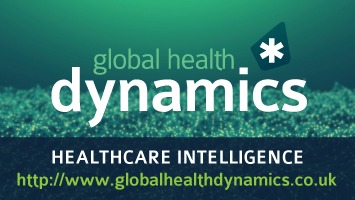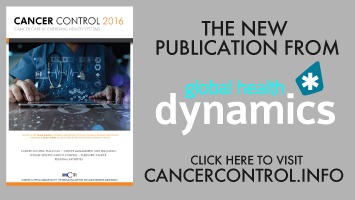
Dr Jean Carlet, President, The World Alliance Against Antibiotic Resistance (WAAAR)
22 March 2016
This book is the second edition of AMR Control, which is published annually. Like the 2015 volume, it contains papers written by highly recognized international scientists and experts. Antibiotic resistance is a multi-faceted topic, and therefore the authors come from a variety of viewpoints. However, the topics are complementary and focus on the important aspects of antibiotic resistance. There are over 20 papers this year, plus an interview with Lord Jim O’Neill, leader of the United Kingdom’s programme against antibiotic resistance, whose Review on AMR is keen to mobilize the G20. Lord O’Neill accurately points out that the cost of action on AMR is puny in comparison with the enormous costs for national economies evaluated at US$ 100 billion dollars at the IMF meeting in April 2016 by the then UK Chancellor George Osborne.
“We hope that you will enjoy the 2016 edition of AMR Control.”
Government engagement and national AMR programmes
I have co-authored a description of France’s strong and coordinated programme which was established in 2001 and includes national plans for human and veterinary settings and a task force set up by the Minister of Social Affairs and Health in 2015 which I chaired and is ongoing. The article is co-authored with Christian Brun-Buisson, Interministerial delegate on AMR, Anne-Claude Crémieux, Vice-President. National Antibiotic Plan Committee, Patrick Dehaumont, Director General for Food, Ministry of Agriculture, Benoit Schlemmer, Head, Antibiotic National Plan Committee, MoH, and Benoit Vallet, Director-General, Health.
From Greece, Flora Kontopidou, Head, AMR Office, presents the Hellenic programme which focuses on the prevalence of carbapenem-resistant Gram-negatives in healthcare settings, and the overuse of antibiotics in the community. The programme is a multi-disciplinary and holistic one, proposing actions at the various steps of the AMR physiopathology. Joseph Sitienei, Director-General, Communicable Diseases, MoH, Kenya, describes an electronic tuberculosis surveillance system, which improved greatly the surveillance and detection of drug-resistant turberculosis.
Diagnostics and infection control
The Director of the Global Tuberculosis Program at the World Health Organization, Mario Raviglione reminds us that AMR is compromising our ability to treat infectious diseases globally, including HIV, tuberculosis and malaria, and proposes to use the established tuberculosis control programme as a model for tackling AMR with its model point-of-care systematic use of diagnostics.
Nigel Livesley, ASSIST/USAID in India, explains how 37 million HIV positive people are especially at risk from contracting AMR, including drug-resistant HIV. His programme insists on a participatory systemic approach for healthcare workers to implement infection control.
Antibiotic stewardship and infection control are equally important to fight against AMR. Prevention of bacterial cross-transmission, in particular in hospitals is a fundamental objective. Didier Pittet, University Hospital of Geneva and Claire Kilpatrick defend the key role of global hand hygiene programmes in supporting infection prevention and AMR control, and describe the first global plan developed by WHO.
Unsafe therapeutic injections are also a serious problem for both healthcare providers and patients, Arshad Altaf, WHO Injection Safety with Selma Khamassi and Pakistan’s Director-General for Health and Assad Hafeez describes the WHO programme and the guidelines for the prevention of this risk, and explain that engineered devices can decrease the AMR burden. The role of water, sanitation and hygiene (WASH) in healthcare settings is explained by Rochelle Rainey, WASH, USAID with Merri Weinger, who emphasize hand washing and lack of access to sanitation facilities in developing countries. Universal access to WASH is a mandatory step in preventing hospital-acquired infections and reducing AMR. Microorganisms, in particular resistant ones, can stay in hospital environments for long periods of time. France’s Toulouse Hospital and Cancer Centre, Head of Infection Prevention and Control, Sandra Malavaud explains the key role of detergence and disinfection in hospitals, as well as the importance of a proper staff training.
Stewardship with DRIVE-AB
There are many issues which remain unknown concerning the best way to apply antibiotic stewardship to hospitals and the community. The DRIVE-AB European project, in which WAAAR is a partner, is presented by its Academic Chair, Stephan Harbarth, IPC unit, Geneva University Hospital with Benedikt Huttner and Veronica Zanichelli, as the project develops new definitions of responsible antibiotic use. It is a multi-disciplinary and multi-national project. Inge Gyssens, also from the Drive-AB stewardship group, presents with Annelie Monnier, the results of their analysis on education, duration, and access and availability in antibiotic use. Hellen Gelband, Associate Director, Center for Disease Dynamics, Economics & Policy, writes an update on their developing countries initiative called The Global Antibiotic Resistance Partnership which seeks to create local multidisciplinary, multisectoral working groups that become national brain trusts for developing countries.
Access and use of diagnostics
Diagnostic issues are of paramount importance in reducing the overuse of antibiotics. Rosanna Peeling, Chair of Diagnostic Research, London School of Hygiene and Tropical Medicine, a world expert on diagnostics, emphasizes with Debrah Boeras the necessity of providing clinicians with rapid diagnostic tests to accelerate access to diagnosis, differentiate viral and bacterial infections, and check on drug susceptibility, which all contribute to reducing AMR. The importance of rapid MRSA/SA screening in emergency surgery is developed by Anne Dubouix-Bourandy, from Clinique L’Union in France. Her system also constitutes an exemplary model for the organization of point-of-care diagnostics delivery. Diagnostics are key to TB control as well, as Mario Raviglione states in his article.
AMR and the environment
Anna Maria de Roda Husman, Head of the Environment Department, RIVM in The Netherlands, Joakim Larsson from Sweden’s University of Gothenburg, CARe covers the global issue of risk management in the environment and points out that the topic is becoming important for policy-makers and research funding. Awa Aidara-Kane, Coordinator of the WHO AGISAR Group, with Andre Andremont describe the risk of diffusion of AMR through the food chain), and the contribution of the WHO AGISAR expert group to its control. Tong Zhang, University of Hong Kong, China, provides interesting data on the presence of both antibiotics and resistance genes in wastewater treatment plants, which are nowadays considered a hot spot for AMR, and proposes adapting the treatment of waste.
R&D innovations
Kamini Walia, lead of the AMR surveillance network in India, Council on Medical Research, with CMR’s director, Soumya Swaminathan develops the different aspects of
research and innovation, in both the development of new antibiotics and of new diagnostic strategies. Ongoing R&D initiatives, in particular by the pharmaceutical industry, are presented. Alessandro Lazdins, with Christopher Thomas, Claire Miller and Mark Webber, from the University of Birmingham, present a way to target plasmids by neutralizing plasmid-encoded toxin/anti-toxin systems, without disrupting cell viability. When fully validated, this technique could very well help to reduce the burden of antibiotic resistance.
Research into alternatives to antibiotics is becoming a fundamental objective. Cassandra Quave, Emory University, reminds us that Nature has been a valuable source of ingredients for traditional medicine for millennia. She has patented a plant-derived product for MRSA. The paper provides an overview of the benefits and challenges in exploring plants as a new source of antimicrobials to use in the fight against AMR. Bacteriophage therapy, presented by Eric Pelfrene of the European Medicine Agency, with Marco Cavaleri, Zigmars Sebirs and Ana Cavaleiro Sanches) represents an interesting alternative to antibiotics, and research is very active in this area. Unfortunately, there are serious limitations and administrative barriers to implementing this therapy in clinical practice, which are discussed here.
From the Ivory Coast, WAAAR member and Africa Desk Director of INPIQS/RIPAQS, Frank Mansour Adeoti reports on the E-Health Africa seminar held in Grand-Bassam, in which the advantages of e-health for care delivery were outlined, with a proposed programme of action for the West African Health Organization (WAHO) on e-health in the face of AMR. ICT could be deployed to assist African countries with AMR, whilst improving their chances of achieving the Sustainable Development Goals for health. The co-authors are the seminars sponsors and speakers from government, NGOs and civil society including Félix Boa Yapo, Director for Health Services, RCI, Serge Coffié, adviser, Telecommunications Ministry, RCI, Mireille Dosso, Director, Pasteur Institute, Stanislas S Kambou, Director, Health Research & Information Systems, WAHO, Joseph Boguifo, Association of Private Clinics, Hyppolite Agboton, African Hospital Network, M Patrick Ismaila Mbengue, GOTIC and Francois Teboul, Visiomed.
We hope that you will enjoy the 2016 edition of AMR
Control.









